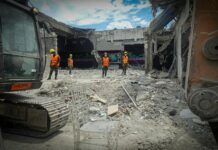
Root Cause Analysis – Accident Investigation Method
Accidents can happen in any setting, be it at work, on the road, or even at home. When unfortunate incidents occur, it’s crucial to determine not only what happened, but also why it happened. This is where Root Cause Analysis (RCA) comes into play. RCA is a systematic method used to identify the underlying causes of accidents, incidents, or problems, aiming to prevent their recurrence. In this article, we’ll delve into the concept of Root Cause Analysis, its methodologies, benefits, and its significance in various industries.
1. Introduction to Root Cause Analysis
Root Cause Analysis is a systematic approach used to identify the fundamental reasons behind accidents and incidents. It goes beyond the surface-level causes and explores the deeper contributing factors that lead to the event. By understanding the root causes, organizations can implement effective preventive measures to avoid similar incidents in the future.
2. The Importance of RCA in Accident Investigation
RCA is vital because it helps organizations move beyond assigning blame and focuses on improvement. It promotes a proactive approach to safety by uncovering weaknesses in processes, systems, or training that may have contributed to the accident. This way, corrective actions can be taken to enhance overall safety.
3. Common Methodologies of Root Cause Analysis
3.1. Fault Tree Analysis (FTA)
Fault Tree Analysis breaks down an accident into a visual representation of events and conditions that led to the incident. It uses a tree-like structure to identify specific failures and their interrelationships.
3.2. 5 Whys Technique
The 5 Whys Technique involves repeatedly asking “why” to uncover the underlying cause of a problem. By asking “why” multiple times, investigators can trace the issue back to its origin.
3.3. Fishbone Diagram (Ishikawa)
The Fishbone Diagram, also known as the Ishikawa Diagram, categorizes potential causes into branches resembling a fishbone. This method helps identify factors contributing to the incident, such as equipment, procedures, people, and environment.
3.4. Change Analysis
Change Analysis evaluates modifications made before an accident. It examines whether these changes might have influenced the incident, whether through new procedures, equipment, or personnel.
4. Step-by-Step Guide to Conducting RCA
4.1. Gathering Information and Data Collection
The initial step involves collecting data about the accident, including eyewitness accounts, records, and any available evidence.
4.2. Identifying Immediate and Underlying Causes
Distinguish between the immediate cause (the event that directly led to the accident) and the underlying causes (systemic factors that allowed the immediate cause to occur).
4.3. Analyzing Cause-and-Effect Relationships
Utilize methodologies like FTA, 5 Whys, and Fishbone Diagram to establish connections between events and determine how they contributed to the incident.
4.4. Developing Corrective Actions
Based on the analysis, formulate corrective actions that address the root causes. These actions should prevent future occurrences by addressing weaknesses in the system.
5. Benefits of Implementing Root Cause Analysis
RCA offers various advantages, including improved safety culture, better risk management, enhanced decision-making, and overall process optimization.
6. RCA in Different Industries
6.1. Manufacturing Sector
In manufacturing, RCA can lead to reduced defects, increased efficiency, and safer production processes.
6.2. Healthcare Industry
RCA in healthcare can result in fewer medical errors, better patient care, and enhanced hospital protocols.
6.3. Aviation and Transportation
For aviation and transportation, RCA can lead to safer travel, reduced maintenance issues, and improved industry standards.
7. Challenges Faced During RCA
RCA may encounter challenges like incomplete data, biased analysis, and difficulty in determining the exact sequence of events.
8. Overcoming Biases in RCA
Biases can affect RCA outcomes. By acknowledging these biases and implementing unbiased investigative practices, the accuracy of the analysis can be enhanced.
9. The Role of Human Factors in Accidents
Understanding human factors such as fatigue, communication breakdowns, and decision-making errors is crucial for effective RCA.
10. Future Trends in Accident Investigation and RCA
As technology advances, accident investigation will likely incorporate AI and data analytics for more accurate and efficient RCA.
11. Conclusion
Root Cause Analysis is a powerful tool that helps organizations learn from accidents and improve safety measures. By digging deep into the underlying causes, RCA enables proactive solutions that prevent the recurrence of similar incidents.
How we can do Accident Investigation in Safety field
Important ‘5Es’ for Accident Prevention
When More Accidents Happen at Workplace
Difference between Accident and Incident in the workplace
FAQs
Q1: Is RCA only useful for industrial accidents? A: No, RCA can be applied to accidents in various fields, including healthcare, transportation, and more.
Q2: How long does an RCA process usually take? A: The duration varies based on the complexity of the accident, but a thorough RCA might take several weeks.
Q3: Can RCA completely eliminate accidents? A: While RCA significantly reduces the risk of recurring accidents, it’s unlikely to completely eliminate them due to unforeseen variables.
Q4: Who should be involved in the RCA process? A: A diverse team comprising individuals with different perspectives, roles, and expertise should be involved in the RCA process.
Q5: How often should an organization conduct RCAs? A: It’s advisable to conduct RCAs regularly, especially after significant incidents, to continuously improve safety measures.
























